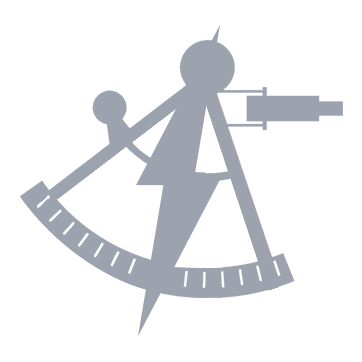Like her namesake, the Apollo was as swift as an arrow, moving through space at fifty-five hundred times the speed of light. The atmosphere on the bridge was a mix of tension and excitement as they raced toward the source of the distress call. As far as anyone knew, the Apollo was supposed to be the first Federation starship out that far, but this transmission proved that wrong. How did another ship end up in the Delta Quadrant? More importantly, which ship was it?
The signal was coming through strong, but it had no message other than general distress. There was also no apparent information about the ship sending it, so the communications and science departments were digging through the signal and running it against the recognition database to find a match. The fact that the computer wasn’t able to provide an immediate read on the point of origin was likely due to either damage to the transmitter or a signal so old that it wasn’t listed in standard databases.
“Report, Mr. Knight,” Gaudain asked, turning in the center seat to look over the shoulders of Commander Rhodes and Ensign Knight. “Do we know who we’re rushing off to rescue yet?”
“The database search just came back with a positive match. It’s the USS Fleming,” Knight said. “Well, it’s a USS Fleming, anyway. NCC-20316. Lost in 2370 in the Hekaras Corridor.”
“And there’s… no doubt about that?” Gaudain asked, looking between Rhodes at the science station and Knight at the communications station. “It’s not that I doubt your work, but that ship is supposed to be immobilized in a subspace dead zone.”
“It checks out, sir. Since that ship was listed as lost, its code was taken out of the standard recognition protocols about thirty years ago,” Rhodes replied. “I agree that it’s… odd, though.”
“Well, if it’s a ghost ship, that would explain why they haven’t responded to our hail,” Gaudain said, rapping his fingers on the edge of his chair. “Thoughts, Number One?”
“Ongoing studies of the Hekaras Corridor have suggested that subspace may be… regenerating or continuing to flux in unique ways, so it’s possible a wormhole could have moved the ship to its current position? That may have triggered an automated distress call,” Rhodes said, his mind going through the possibilities. “Or it’s been discovered by an alien race.”
Gaudain nodded. “Let’s not take any chances. Yellow Alert,” he ordered.
The already-muted lighting on the bridge went one step further down, supplemented by splashes of gold all around from the alert lighting. A low alert tone sounded, informing the crew to proceed to enhanced readiness protocols. The ship’s shields energized, and weapons were put on standby mode, while additional sensor suites were brought online to scan for the faintest hint of any threats.
“How far out are we, Lassus?”
“Eta is forty-one minutes, Captain.”
“Number One, I want a briefing on that ship in twenty minutes for the senior staff,” the captain ordered.
There wasn’t much to glean from the files on the Fleming contained within the Apollo’s database. As a ship that was supposed to be dead in space halfway across the galaxy, there had been no need to include the entire historical record for their trip to the Delta Quadrant, and they were out of range of the relay stations to double-check.
“The Fleming is an ex-Soyuz-class picket cruiser reconfigured as a Mercy-class medical transport. Launched in 2387, she was originally named the Kondakova until she was reconfigured in the 2330s,” Rhodes reported once the senior staff had gathered in the briefing room.
Other than Gaudain, Counselor Altmann, and their Vulcan chief engineer, the staff of the Apollo was incredibly young. Rhodes was always keenly aware of just how young they were when they were in briefings like that; everyone looked torn between excitement and nerves from the unknown variables at work. Well, almost everyone; Knight just looked plain nervous.
The screens at both ends of the room, as well as the holographic projector in the center of the table, were displaying specifications and schematics of the Fleming, which resembled a Miranda-class vessel, but with an extended superstructure containing large shuttle and cargo bays. While she had expanded sickbay capabilities, her main job was to move large amounts of medical supplies from place to place in support of medical stations or surface-bound hospitals.
“She had a standard crew of 30, with space for a hospital team of two-hundred and up to five-hundred ambulatory patients. While carrying a cargo of bio-mimetic gel, she was lost in the Hekaras Corridor in 2370. At the time of her loss, she only had twenty people aboard, and all were rescued by the Enterprise. The last report was from 2377, confirming that she was still in the corridor,” the science officer concluded.
“Bio-mimetic gel, Doctor?” Gaudain asked.
Dr. Bradley cleared his throat. “It’s an extremely versatile compound. You can use it for genetic research, bioweapons, cloning, and all sorts of highly illegal things. It’s surprising to hear that the cargo was left in situ,” the young man replied.
“Are there any risks we should be aware of? What’s the shelf-life of the stuff?” the captain asked.
Rhodes bit his tongue to avoid interjecting ahead of the doctor, but he’d read up on the compound himself. He shuddered to think what could happen to it if left to sit for three decades, especially if it had been exposed to any exotic radiation or organic particles in the meantime. It was illegal for civilians to keep because of its great potential for misuse. The Federation knew so little about the medical acumen of races like the Vidiians and Voth, but he did know that a substance like that in the hands of the Kazon or the Devore could be extremely dangerous.
“Indefinite, under proper storage conditions. I couldn’t speculate on the risks if containment has been breached in an oxygen-rich environment or if the cargo has been exposed to any contaminants,” Bradley responded. “If the hold has been damaged, and if the containers have been exposed to vacuum, it’s likely been reduced to inert material.”
“But it could really survive 30 years in deep space?” the ship’s security chief, Lieutenant Schaeffer, asked.
“I don’t see why not,” the doctor noted. “For all involved, it would probably be better if it didn’t, though.”
The captain nodded. “All the more reason to get to her as soon as possible. Do we have any theories on how it got out this far?”
“Even discounting the effects of the Hekaras Corridor, the Fleming would have taken at least 374 years to reach this position at warp five,” Lieutenant Commander T’Rann noted, from her seat opposite Rhodes.
“Nothing on our scans suggests the presence of a wormhole or other such phenomenon, either,” Rhodes noted.
“Is it possible that a Starfleet team boarded her and moved her?” Gaudain asked.
Rhodes shook his head. “Not as far as we can tell. One of the reasons she was never removed from her resting place was that she was out of range of tractor beams due to subspace interference. That interference should have only increased in the intervening years,” he reported.
“What about the system we’re headed to? Anything note-worthy?”
“No inhabited worlds. Several gas giants and at least three distinct asteroid belts. In terms of subspace, there’s nothing remarkable on our sensors,” Rhodes said, switching the display to a stellar cartography plot. “If we hadn’t picked up the signal, there’s little chance we would have bothered to scout this system.”
“Bridge to the Captain. We are approaching the system,” Ensign Accardi reported over the comm.
“Let’s get to it, people,” Gaudain said as the senior staff rose from their seats and followed him out of the briefing room.
As soon as the bridge officers were seated, Ensign Lassus pulled the Apollo out of warp, and they found themselves on the edge of an unknown star system. While Rhodes hadn’t been in Starfleet for as long as Gaudain had, he’d still been in space for over six years at that point. Even still, being on the threshold of something new remained a definite thrill.
“Where’s my ship?” Gaudain asked.
“Having trouble getting a fix on it, sir,” Knight reported from communication. “It… the signal is coming in very clearly from this system, but natural interference from the asteroid belts is making it tough to localize it,” he said.
“Keep on it. Helm, plot a standard search pattern,” the captain ordered.
Rhodes pulled up the signal on his screen next to Knight and began working in parallel with the younger man. The signal appeared to bounce around randomly through the system until Rhodes realized that one particular point in the system was being hit over and over again, and then he saw that many points were reoccurring.
“Knight, based on the frequency and power of the signal, let’s try to triangulate it based on the known reflection points,” Rhodes suggested.
“Aye, Commander,” the ensign replied.
The two science division officers worked for several minutes before they started to get a bearing on the target. It was difficult to pinpoint precisely, but they at least knew what direction it was coming from.
“Sir, the signal originates from approximately 23 degrees to starboard,” Rhodes reported.
“Helm, adjust course. Full impulse,” Gaudain ordered. “Good work.”
At that speed, it still took about four minutes before the Apollo was in visual range of her quarry, but when they put the approximate location of the other ship on the viewscreen, it was difficult to see anything other than the floating rocks of the asteroid field. At that range, Rhodes was able to further refine their detection algorithm, and he’d narrowed the Fleming’s location down to a cluster of about a dozen large-ish asteroids.
“Let’s see what you’re made of, Lassus. Take us in,” Gaudain ordered, giving the young pilot at the helm her first test aboard the Apollo.
On impulse, Rhodes stood up so that he could get a better view of the viewer past Gaudain’s seat, watching as the scout ship dove past the enormous boulders. She clearly knew her stuff, though, as they were able to pass through with few close calls. After a few minutes, he saw the tell-tale white hull of a Federation starship. It was intact, and the power systems appeared to be online, judging from the blue glow of the warp coils. They had found the Fleming. Just when he was about to sit down to perform an analysis, a glint of violet arced across the screen as a menacing alien vessel decloaked in front of them and opened fire.
“Red alert, evasive maneuvers!” Gaudain ordered.

 Bravo Fleet
Bravo Fleet








